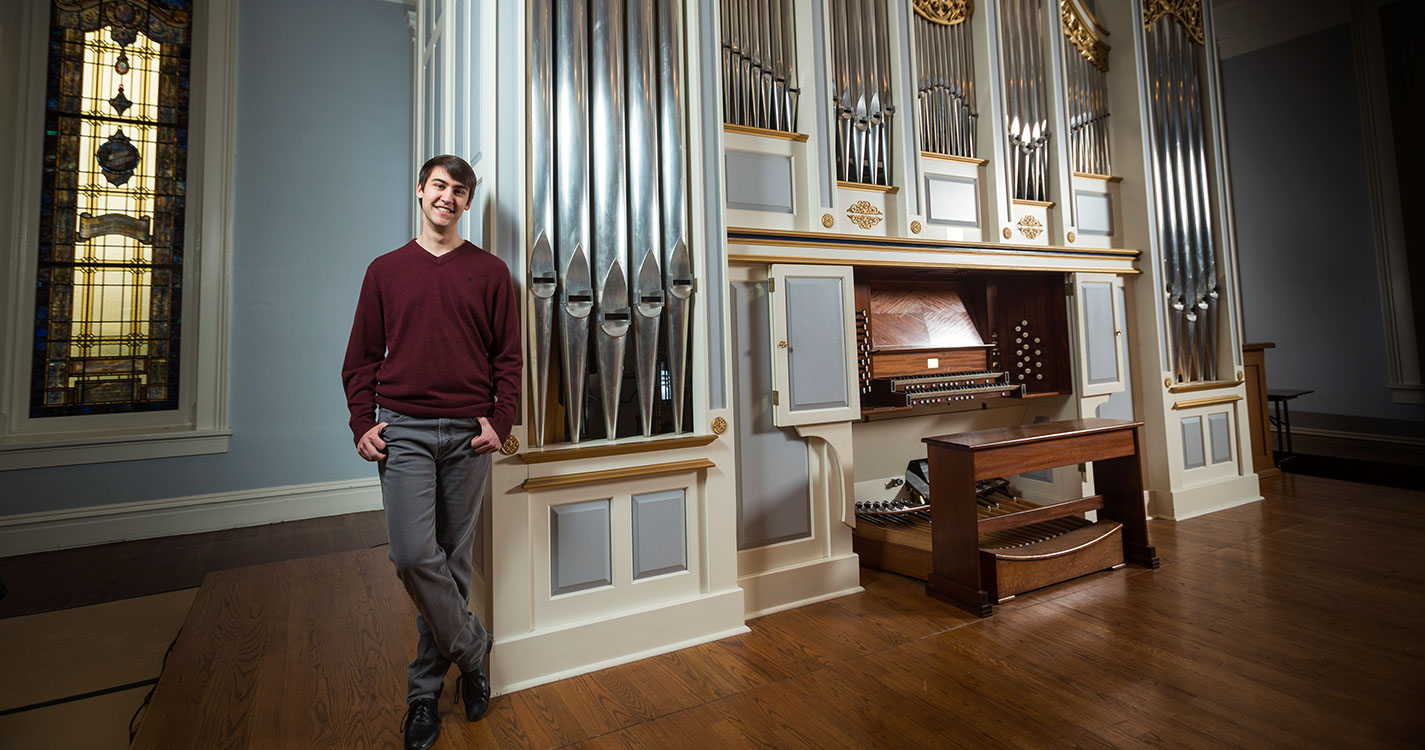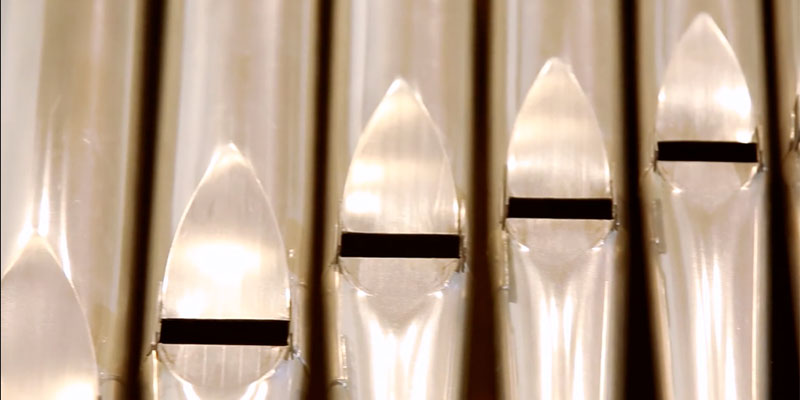When music student Zachary Duell ’18 sits down to practice, he’s not restricted to one instrument. He can play practically all of them. At once.
Duell describes playing the Bishop Family Organ in Cone Chapel as like “having an orchestra at your fingertips.”
Heralded by Mozart as the “king of instruments,” organs can replicate the sounds of a variety of instruments through their intricate pipes and stops. Duell, who previously played piano and has only been studying the organ since transferring to Willamette in 2015, loves its unparalleled versatility.
The only Willamette student studying the organ this semester, Duell practices on the Bishop organ and two others on campus. According to organ professor Paul Klemme, fewer colleges and universities support organ programs, so Willamette’s resources for a degree with an emphasis in organ performance rank it within the top 10 to 20 percent of schools nationwide.
Every organ is uniquely constructed according to space and purpose. The Bishop Family Organ was built to harmonize with the style and design of Waller Hall and to play a wide range of music, from Renaissance to contemporary.
“Perhaps more than any other instrument,” Duell says, “the organ allows me to create exactly what I hear in my mind, whether that’s an aural conception of a composer’s work or something improvisatory.”
Many people find the complex instrument daunting, but Duell says it just takes some practice. Above all, an organist has to learn its quirks. “You kind of humble yourself before the instrument,” he says, “and hope it accepts you.”
The organ: The Bishop Family Organ was a gift of the family of C.M. Bishop Jr., longtime university supporters, in memory of Clarence Morton Bishop and Harriet Broughton Bishop. The 14-foot masterpiece of metal piping, hand-carved woodwork and intricate mechanics has been the grand centerpiece of Cone Chapel since 1991. Its overall shape is modeled after the work of Thomas Appleton, a prominent early 19th century American organ builder. A Portland-based specialist company took 5,000 hours to build and install the instrument in the chapel. It’s a tracker action organ, which means the pedal board and keyboards are directly linked to its 1,542 pipes.
Stops: The Bishop organ has 24 stops that correspond to various instruments, from the trumpet to the less common Nazard flute. If he wants to play a combination of instruments, Duell can preset them on the organ.
Stops represent four tone “families” — principal (basic organ sound), string, reed and flute — but each organ’s sound is unique. Duell says, “The tiniest tweaks in how you build the pipe can change the timbre of sound.”
Stops also produce different qualities of sound for each note, such as pitch and volume, and control airflow to the pipes. Selecting a stop sends an electric signal to a processor inside the organ that opens one or multiple sets of pipes, called ranks.
Pedalboard: In addition to a keyboard, the organ has a pedalboard with 32 keys, 6 stop options and two pedals to add volume and stops.
Shoes: Organists wear tightly fitted, suede-soled shoes, as street shoes are too wide for the intricate footwork, and rubber soles stick to the pedal.
This article originally appeared in the spring 2017 issue of Willamette magazine.


